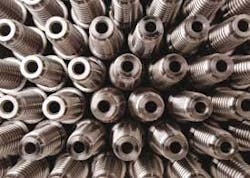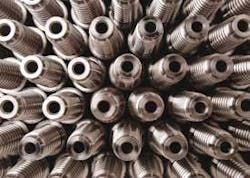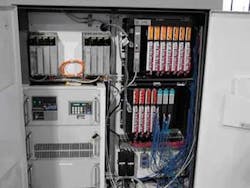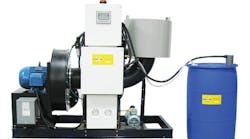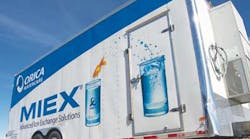by Robb Dussault and Grant Van Hemert
In the water and wastewater industries, most facilities are designed with a 20-25 year life cycle and the installed equipment is expected to last the duration. Yet, in the field of integrated circuitry the obsolescence rate is less then five years. This has an impact on the computers, SCADA hardware and programmable automation controller (PAC) hardware found in water and wastewater facilities.
Most automation vendors have done an excellent job of recognizing this challenge and continue to manufacture parts long after a product line has become obsolete. However, an aging automation system’s obsolete components translate to indefinite costs, unpredictable maintenance requirements and increased potential for downtime.
When municipalities think about retrofitting their existing automation system and software, often their thoughts turn to the immense burden, risk and cost associated with an upgrade. Upgrading automation systems shouldn’t be considered from merely a short-term perspective, though. When properly analyzed, the increased reliability, enhanced processing power and other long-term benefits often outweigh the time and cost invested today.
More importantly, migration doesn’t have to be a burden or require extensive resources. Today, automation services companies offer a variety of ways to upgrade. A total migration used to be the only option, but now, simple and phased migration methods allow municipalities to upgrade one or two components, or their entire system, over a longer period of time. This allows a municipality to budget the migration across multiple years, thereby minimizing tax burden and often negating the need for loans, bonds or grants. Some municipalities even have performed migration through the use of unused maintenance funds.
How Do You Choose?
Having a choice in migration methods allows municipalities to evaluate the scope and cost of their migration project and better manage it to fit into their maintenance schedule, downtime and budget - but how do you choose? Plant operators and maintenance personnel need to answer the following questions when deciding the migration path to choose:
- How much of an initial investment do you want to make now and in the near future?
- How long can you afford to have the system down?
- Do you want to switch platforms or stay with the existing automation systems provider?
Choosing the best method for migration involves weighing both the short and long-term costs and benefits. Three main paths of migration often are pursued: complete, phased and partial.
Complete Migration
Traditionally, a complete or total migration was considered the only option for an automation system upgrade. A total migration consists of removing all existing equipment and making a complete, single-step switchover to a new processor, software, I/O and wiring. This one-time installation is the highest initial investment and is the greatest disruption to plant operations. In addition, total migrations require the most time to complete because installing a new system can involve many unknown factors.
Municipalities should choose this option if they are making large-scale changes to their facility and massive function changes to a process. In this case, it’s more beneficial for a municipality to choose a complete migration and to make the function changes on the new platform rather than the old one. Choosing a complete migration for this scenario offers the municipality a one-time installation and a comprehensive solution. Also, complete migration is the option for a municipality looking to switch platforms.
Phased Migration
Phased migration is often the best option for municipalities looking to upgrade their entire system while also reducing their initial investment and downtime. Phased migration takes a multiple-step approach to upgrading and can be spread out over a number of months or years. In addition, a municipality may be able to finance a phased migration with each year’s maintenance budget.
In a water/wastewater facility, phased migration can be accomplished by changing one train at a time. This can provide dual control systems during a changeover, it minimizes plant disruption and ensures reliability. All the steps of the phased migration method can be completed relatively seamlessly and quickly, and reduce the risk of taking the entire facility out of commission. In addition, if there are scope changes or last-minute adjustments to the functionality of the system, phased migration allows the facility to use the existing train until final changes are made to the new system.
Today, municipalities are finding that phased migration makes sense because critical process trains can’t be down for longer than a few hours. In addition, a phased approach would be most beneficial if a facility’s process is based on an old programming architecture that doesn’t communicate with any of the other equipment, and the operator always wants to be able to maintain and diagnose it using the maintenance personnel available. In this case, the municipality can easily upgrade each piece of the system step by step and revert back to the old system if there are last-minute adjustments.
Phased migration puts the organization’s destiny in its own hands. Municipalities have more control of the migration process because it’s simpler for them to monitor the progress of the conversion. Plus, scheduling migration means downtime can be planned for when it is most convenient and least likely to negatively impact treatment.
Not only does a phased migration involve more flexibility and a lower initial investment, but one of the biggest advantages to this option is the migration products and experience of the automation systems provider. Often, the provider’s conversion expertise can reduce the amount of time a process is offline, and minimize the need for replacement control panels.
Facilities taking advantage of the benefits of phased migration must use their original automation systems provider. If a municipality wants to change providers, a complete migration will be necessary because automation systems providers cannot upgrade components from another provider.
Partial Migration
Partial migration is a single-step upgrade of only one or two components or systems. Unlike a phased migration, a partial migration does not have a defined timetable for continued migration. This open-ended timetable means that a municipality can resume upgrading at any point in the future when time and budget allows. A partial migration has the smallest initial investment, and like a phased migration path, facilities can take advantage of their provider’s conversion products and services, and can revert back to their old system if need be.
However, the open ended commitment means that the municipality should periodically coordinate with the automation vendor to ensure that parts not yet migrated will be available. Availability of spare parts can shorten, or lengthen, the time frame to complete the migration. Partial migration is an attractive option for municipalities that also continue to use their original automation systems provider.
Municipalities that can benefit from this migration method are those that need only minimal upgrading, or have systems in isolated zones of automation. For example, a facility that has a reliable I/O but wants to add functionality and capacity to its processor and system would be an ideal candidate for a partial migration. In the future, the facility could opt to upgrade the I/O and software program if necessary.
Reaping the Benefits of Migration
Having a choice in migration methods allows a municipality to identify the type of upgrade best-suited to its unique situation. Municipal governments are much more likely to allow a treatment facility to upgrade its automation systems if the facility can tailor a method that meets its individual needs while reducing cost, burden and risk, and making the project more manageable from a budgetary standpoint.
About the Authors
Robb Dussault is the manager for automation and control services for Schneider Electric. He has more than 14 years of experience in automation, and previously was an applications engineer and worked in hardware development and product management. Dussault can be reach at [email protected]. Grant Van Hemert is an automation and control applications engineer for the Schneider Electric Water Wastewater Competency Center. Van Hemert has over 11 years of water and wastewater experience. Previously he was a design and implementation engineer where he designed and commissioned automation and instrumentation systems dealing with aeration, screening, and clarification. Van Hemert can be reached at [email protected].
